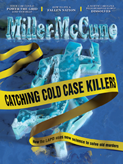Buffy Martin Tarbox was 22 when she got her first tattoo. It was a 4-by-3-inch, black and red circle above a cross — the symbol for women—on her arm. Less than a month later, she added a second tattoo: a black Celtic knot on her other arm. But when Martin Tarbox reached her mid-30s, she decided it was time for the ink to go. “When I got the tattoos, like most people, I was young,” she says. “Believe me, I regret it. I’m a professional woman now.”
Roughly a third of Americans between the ages of 25 and 29 have at least one tattoo, according to a 2008 Harris Poll. So do a quarter of 30- to 39-year-olds. Like many trends, celebrities are helping to drive the desire to get inked — roughly 70 percent of NBA basketball players are tatted up, according to Andrew Gottlieb’s In the Paint: Tattoos of the NBA and the Stories Behind Them, as are a slew of entertainers from Lil Wayne to Lady Gaga.
But tattoo remorse is leading many of the painted masses to rethink their ink and opt for increasingly available laser removal procedures. They are fueling a burgeoning business: specialty removal shops, like California’s Dr. Tattoff, Chicago’s Hindsight Tattoo Removal, and Zap A Tat in Virginia, are thriving.
The Nov-Dec 2011
Miller-McCune
This article appears in our Nov-Dec 2011 issue under the title “Disappearing Ink.” To see a schedule of when more articles from this issue will appear on Miller-McCune.com, please visit the
Nov-Dec 2011 magazine page.

“It’s a common misconception that our patients are gang members and bikers,” says Dr. Tattoff founder Will Kirby, a Beverly Hills dermatologist who starred in the reality TV shows Big Brother 2 and Dr. 90210. “Our average patient is a female between the ages of 25 and 40 who got a tattoo as an aesthetic statement and now has a different lifestyle. It might be that the tattoo is a barrier to employment, … maybe it’s just a sign associated with the person’s youth. … I see absolutely gorgeous work. That said, every bad tattoo that you could think of — spelled wrong, done in the garage, etc. — we see a lot more of that than we see beautiful work.” He adds, “If you want to immediately ruin a relationship, get your significant other’s name tattooed on you.”
In 2004, Kirby realized more and more patients were asking him for tattoo-removal help, so he started providing the services once a week. Today, practitioners at Dr. Tattoff clinics have performed more than 110,000 treatments at the company’s five full-time clinics (four in California and one in Texas). The company plans to open at least two more — one in Houston and one in Atlanta—before the end of the year. And Kirby speculated that the company might go public later this year.
Spurring the industry growth is vastly improved technology. In the last decade, dermatologists began using a “Q-Switched” laser that directs short pulses of highly focused light energy at the tattoo, heating up the ink and breaking it into fragments that are absorbed by the body.
“The new technology is so far superior to the old,” says Amy Derick, an Illinois dermatologist who performs 25 to 50 tattoo removal procedures per month. The laser makes removal less painful than harsh previous techniques like dermabrasion and salabrasion (scrubbing ink out with sandpaper and salt) or simply cutting out the tattoo and sewing the skin back together.
Kirby calls the current process “uncomfortable, but tolerable,” like being snapped with a rubber band several times. And removing a tattoo requires more time and money than getting one. Most patients undergo between five and 15 treatments, depending on the person’s skin tone, ink and tattoo location.
Practitioners often charge by the square inch; each treatment at Dr. Tattoff costs $49 per square inch for the first five square inches, $25 per square inch for the next five, and $15 per square inch for each additional inch. At Sunset Strip Tattoo in Hollywood, an average small tattoo (2 to 4 square inches) costs about $100.
Kirby says the outcome is by no means guaranteed, but for many of his patients, the time, money, and uncertainty are nothing compared to the lasting sting of an embarrassing tat.
After about six treatments by a dermatologist in Nevada and more than $1,200, Martin Tarbox’s tattoos faded but remained visible. “My husband jokes that it looks like I have prison tattoos. They look pretty bad,” she says, adding, “As my dad would always say, ‘If you can’t be a good example, be a horrible warning.’”




